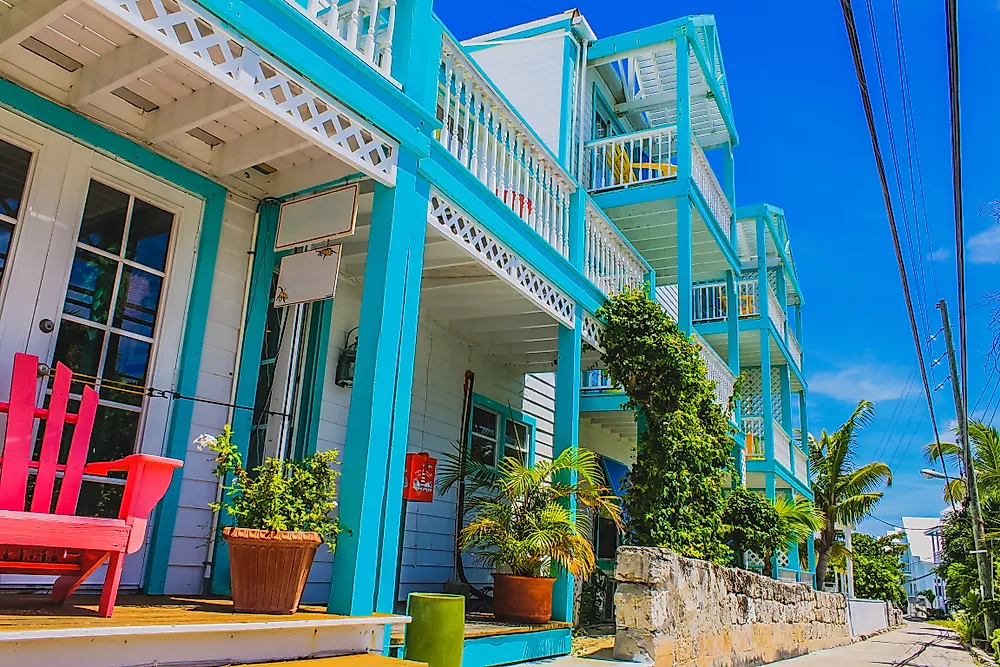The Culture Of The Bahamas

The Bahamas is an island nation in the Atlantic Ocean that consists of an archipelago of more than 700 islands, cays, and islets. The country has a population of about 332,634, which includes the following ethnic groups: Black (90.6% ); White (4.7%); and mixed (Black and White, 2.1%). English is the official language of The Bahamas, and Christianity is the predominant religion. More specifically, 69.9% of Bahamians are Protestant Christians, and Roman Catholics and other Christian denominations account for 12% and 13% of the population, respectively.
5. Bahamian Cuisine
Seafood like fish, crab, and shellfish are an integral part of Bahamian cuisine. Other foods widely consumed throughout the country include rice, tropical fruits, potatoes, pork, and peas, while onions, garlic, coconut, cinnamon, chili peppers, are lime are common seasonings in Bahamian dishes. A large part of the food consumed in the Bahamas is also imported from other countries. Popular soups in The Bahamas include split pea soup, souse (made with chicken, potatoes, pepper, and lime), stewed fish, conch chowder, are the different types of soups consumed in the Bahamas. Conch is the national dish, which is a mollusk with firm, white flesh, and can be served raw with vegetables and lime juice, or stewed, deep-fried, or steamed. Baked crabs, baked bonefish, boiled fish, and fried grouper are additional common seafood dishes, and chicken, pork, and goat are the most popular meat dishes. In some of the outlying islands, iguanas are hunted and eaten. Steamed corned beef and white rice form a popular Bahamian dish called fire engine. Grits, baked macaroni and cheese, potato salad, and johnnycake are typical side dishes consumed in The Bahamas, while tarts, bread pudding, rum cake, and guava are popular desserts. Coconut water and other fruit juices are common beverages. Switcha is a popular Bahamian lemonade made from locally grown limes. Triple B and Goombay Punch are common non-alcoholic beverages commercially produced in The Bahamas, while rum, Sky juice, Kalik (Bahamian beer), Goombay Smash, Planter's Punch are popular alcoholic beverages.
4. Literature and Arts in The Bahamas
The Bahamas has a rich tradition of oral histories, featuring folktales and legends, heroic tales, and fairy tales that have been passed down through the generations by word of mouth. Written literary works include poetry, historical accounts, and novels. Bahamian storytelling is a much-revered art and these tales told often carry witty messages. James Gambier, 1st Baron Gambier, was the first Bahamian to publish a literary work in 1782. Common works of art produced by Bahamian artists and painters include landscapes, seascapes, and paintings of historical events. Popular crafts include straw weaving (which is used to produce beautiful hats and baskets), wood carving, and coral and stone art.
3. Performance Arts in The Bahamas
Music and dance are an integral part of the life in The Bahamas. Various celebrations held throughout the year include song and dance shows, spectacular parades, and concerts. Calypso, reggae and soca, which are styles of Afro-Caribbean music, are popular in The Bahamas. Junkanoo, which is a street parade that includes music, dance, and costumes of Akan origin, is a celebration held annually on Boxing Day and New Year's Day. Goatskin drums and cowbells are used to create much of the music that is part of Junkanoo. Rake-and-scrape is another popular style of music in The Bahamas, which uses Goombay drums, concertinas (a free-reed musical instrument), and handsaws.
2. Sports in The Bahamas
Cricket is the national sport of The Bahamas. The sport has been played on the islands since 1846, and the Bahamas Cricket Association was formed in 1936. Other popular spectator sports played in The Bahamas include baseball, basketball, American football, rugby, and netball. Boxing, swimming, and tennis are also common. Bahamians athletes have excelled in track and field, winning medals in international competitions such as the Olympic Games, Commonwealth Games, and Pan American Games.
1. Life in Bahamian Society
Laws in The Bahamas provide for equal rights and freedoms to both the men and women. However, although many women work outside the home in fields such as education, administration, and social services, men tend to occupy most of the highest positions in these fields. The fishing industry is also predominantly male. Marriages are usually born out of romantic relationships, as men and women are free to select a partner of their choice. Common-law relationships are common in urban areas, and there is no stigma associated with divorce or re-marriage. Interracial marriages are sometimes stigmatized. In rural areas, women are expected to remain chaste until marriage and loyal after marriage, but men are not subjected to the same expectations. Nuclear families are common, in which authority is usually equally divided between the two partners, and both male and female children inherit the properties of their parents. Education is considered important in Bahamian society and parents try their best to provide good education for their children.











